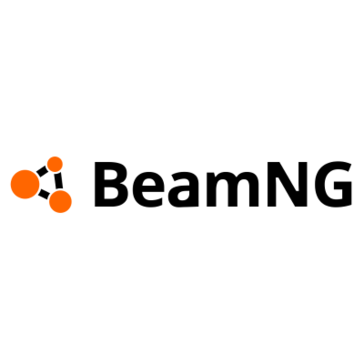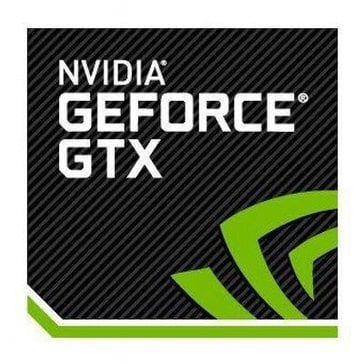Description

BeamNG

Matali Physics

PhysX
Comprehensive Overview: BeamNG vs Matali Physics vs PhysX
BeamNG, Matali Physics, and PhysX are all physics engines used in various applications, primarily in gaming, simulation, and visualization. Here's a comprehensive overview of each, focusing on their functions, target markets, market presence, and differentiating factors.
BeamNG
a) Primary Functions and Target Markets:
- BeamNG is best known for its vehicle simulation capabilities. The core product is BeamNG.drive, a vehicle simulation video game that uses the company's proprietary physics engine to deliver highly realistic soft-body physics modeling.
- Target Markets include sim racing enthusiasts, educators in vehicle dynamics, and game developers interested in integrating realistic vehicle physics into their projects.
b) Market Share and User Base:
- BeamNG is a niche product with a dedicated fanbase, particularly among simulation enthusiasts and hobbyists. Its market share in the broader physics engine space is small compared to giants like PhysX, as BeamNG.drive itself is more of a consumer product rather than a widely licensed engine.
c) Key Differentiating Factors:
- Realism in Vehicle Dynamics: BeamNG’s standout feature is its highly realistic simulation of vehicle dynamics and crash behavior.
- Soft-Body Physics: Unlike many other physics engines that primarily focus on rigid-body physics, BeamNG's soft-body dynamics allow for more complex interactions and deformations.
- User-Driven Content: The community around BeamNG actively contributes mods, adding to its versatility.
Matali Physics
a) Primary Functions and Target Markets:
- Matali Physics is a high-performance physics engine designed for cross-platform game development, as well as simulations and real-time visualizations.
- Target Markets typically include game developers and companies involved in serious simulations, particularly those looking for a comprehensive solution that includes physics, graphics, and AI integration modules.
b) Market Share and User Base:
- Matali Physics is less well-known in the broader market relative to major players like PhysX or Havok. It serves a niche segment, particularly developers seeking a less mainstream but robust physics solution.
c) Key Differentiating Factors:
- Cross-Platform Support: It supports multiple platforms, which is attractive for developers aiming for wide distribution.
- Modularity and Integration: The engine offers a modular architecture that integrates well with other systems for graphics and AI, allowing for versatile implementations.
PhysX
a) Primary Functions and Target Markets:
- PhysX, developed by NVIDIA, is a robust physics engine that handles real-time physics calculations, widely used in the gaming industry to enhance realism in gameplay.
- Target Markets for PhysX include game developers, VR experiences, film visual effects, and industries needing scientific simulations.
b) Market Share and User Base:
- PhysX holds a significant market share as part of NVIDIA’s ecosystem, wide adoption in gaming and visual applications, and integration into popular game development platforms like Unreal Engine and Unity.
- The user base is vast, encompassing AAA game studios, independent developers, and enterprise-level simulation solutions.
c) Key Differentiating Factors:
- GPU Acceleration: As an NVIDIA product, PhysX is optimized for GPU acceleration, allowing for complex simulations that can be computed much faster than CPU alone.
- Integration with NVIDIA Technologies: It integrates seamlessly with other NVIDIA offerings (like CUDA and OptiX) to utilize advanced rendering, AI, and machine learning capabilities.
- Proven Track Record: PhysX is well-established with extensive documentation and community support, making it a reliable choice for developers.
Conclusion
In summary, BeamNG focuses on realistic vehicle simulation with a niche market, Matali Physics offers cross-platform versatility for smaller developers, and PhysX leverages NVIDIA’s ecosystem for high-performance real-time physics in mainstream gaming and simulation. Each engine has its unique strengths and is chosen based on specific needs, emphasizing realism, performance, integration, or platform support.
Contact Info

Year founded :
Not Available
+49 42 140894390
Not Available
Not Available
Not Available

Year founded :
Not Available
Not Available
Not Available
Not Available
Not Available

Year founded :
Not Available
Not Available
Not Available
Not Available
Not Available
Feature Similarity Breakdown: BeamNG, Matali Physics, PhysX
When comparing BeamNG, Matali Physics, and PhysX, it's important to understand their focus areas and applications. BeamNG is primarily known for its realistic vehicle simulation, Matali Physics is a cross-platform 3D engine, and PhysX is a popular physics engine developed by NVIDIA. Here’s a breakdown of their features:
a) Core Features in Common
-
Physics Simulation:
- All three systems provide robust physics simulation capabilities, allowing for realistic modeling of physics interactions in virtual environments.
-
Collision Detection:
- They all feature advanced collision detection systems to handle interactions between objects in 3D space.
-
Cross-Platform Support:
- All three have some level of cross-platform functionality, meaning they can integrate with various systems and platforms (though the exact platforms may differ).
-
Modular Architecture:
- They offer modularity to some extent, allowing developers to integrate the features they need into their projects.
b) User Interface Comparisons
-
BeamNG:
- BeamNG has a user-friendly interface tailored for its vehicle simulation focus. The UI is designed to offer detailed controls over vehicle dynamics and environmental settings, suitable for game developers and simulation enthusiasts.
-
Matali Physics:
- Matali Physics provides a more technical and developer-centric interface. It often requires a higher level of programming knowledge because it is a physics API intended for deep integration into applications and games.
-
PhysX:
- PhysX, being part of NVIDIA’s suite, has a sophisticated interface with extensive developer documentation and support. It is well-integrated within the NVIDIA ecosystem, with tools designed for complex simulations and graphics applications.
c) Unique Features
-
BeamNG:
- Unique for its highly realistic vehicle dynamics, soft-body physics engine, which simulates cars and environmental interactions in remarkable detail.
- Focuses heavily on crash and damage modeling, offering a level of detail in vehicle destruction that is unmatched by the other engines.
-
Matali Physics:
- A unique feature is its ability to support a broad range of object types and its adaptability to different simulation needs, including games, simulations, and other interactive applications.
- Offers unique physics simulations tailored for different genres beyond just simple rigid body dynamics.
-
PhysX:
- Known for its GPU acceleration, thanks to its integration with NVIDIA’s hardware, allowing for extremely high performance in physics-heavy applications.
- Features sophisticated fluid dynamics and particle systems, which are not as emphasized in the other two.
Each of these products has strengths that cater to different needs, whether it’s BeamNG’s niche in vehicle simulation, Matali’s flexibility, or PhysX’s performance and integration capabilities.
Features

Not Available

Not Available

Not Available
Best Fit Use Cases: BeamNG, Matali Physics, PhysX
When it comes to physics engines like BeamNG, Matali Physics, and PhysX, each has its unique strengths and is suited for specific types of projects and industries. Here’s a detailed comparison to help understand the best-fit use cases for each:
a) BeamNG
Best Fit Use Cases:
- Automotive Industry: BeamNG is renowned for its hyper-realistic vehicle and crash simulations. Automotive companies can benefit greatly from its ability to simulate various vehicle dynamics and crash scenarios for research, safety testing, and design optimization.
- Entertainment and Gaming: Given its realistic physics, BeamNG provides an immersive experience, making it suitable for developers creating driving simulations or car-based games.
- Education and Research: Institutions focusing on mechanical engineering, physics, or automotive research can use BeamNG for educational simulations and experimentation.
Business or Project Types:
- Companies needing detailed and accurate physics simulations for vehicles.
- Game developers focusing on driving or crash simulation experiences.
- Academic and research institutions involved in physics or automotive studies.
b) Matali Physics
Preferred Scenarios:
- Cross-Platform Development: Matali Physics is known for its cross-platform compatibility, supporting various devices and operating systems which makes it ideal for projects targeting multiple platforms.
- Simulation Projects: Its flexibility and modular architecture are beneficial for projects involving complex physics simulations beyond just vehicle dynamics, perhaps in architectural or environmental modeling.
- Customization Needs: The engine’s design allows for significant customization, making it suitable for projects where proprietary physics behaviors or mechanics are needed.
Business or Project Types:
- Software development companies looking for a physics engine that supports a wide range of platforms.
- Projects requiring complex, non-standard physics simulations.
- Innovators developing unique, physics-based products requiring significant customization.
c) PhysX
When to Consider PhysX:
- Mainstream Gaming: PhysX is widely used in mainstream game development due to its integration with Unreal Engine and Unity, providing an optimized experience for creating realistic games, especially those involving character physics and environmental interactions.
- Augmented and Virtual Reality (AR/VR): Given its focus on performance and realism, PhysX is ideal for AR/VR applications where immersive environments and interactions are key.
- Larger Scale Simulation Projects: PhysX can handle complex simulations like fluid dynamics and particle systems, suitable for larger projects needing robust and optimized physics solutions.
Business or Project Types:
- Game developers working on high-fidelity, physics-heavy games using popular engines.
- Companies developing AR/VR applications requiring detailed physical interactions.
- Enterprises needing extensive physics simulations for engineering, biotech, or animation.
d) Industry Vertical and Company Size Catering:
-
BeamNG: Typically caters to mid to large-size automotive companies, specialized game development studios, and academic institutions. Its niche focus on vehicle dynamics may not be needed by smaller gaming studios or non-automotive businesses.
-
Matali Physics: Suitable for small to medium-sized enterprises that need flexible and cross-platform physics solutions. Its modular approach and customization potential match well with companies developing diverse applications from scratch.
-
PhysX: Often used by large-scale game developers and technology companies in AR/VR, but also accessible to smaller studios due to its incorporation in popular game engines. PhysX serves a broad range of sectors from gaming to scientific visualization, making it versatile across industry sizes.
Each of these physics engines offers distinct capabilities. The best choice will depend on project needs, industry requirements, and the level of customization and platform support required.
Pricing

Pricing Not Available

Pricing Not Available

Pricing Not Available
Metrics History
Metrics History
Comparing undefined across companies
Conclusion & Final Verdict: BeamNG vs Matali Physics vs PhysX
Conclusion and Final Verdict
When evaluating BeamNG, Matali Physics, and PhysX, it's important to consider a multitude of factors, including realism, performance, ease of integration, community support, and cost-effectiveness. Each of these physics engines has its unique strengths and potential drawbacks, making them suitable for different applications and user needs.
a) Best Overall Value
NVIDIA PhysX often offers the best overall value for a broad range of applications, particularly in game development and real-time simulations. Its integration with NVIDIA hardware, wide adoption, and robust feature set make it a versatile choice for developers. The consistent updates and support from NVIDIA further enhance its value proposition.
b) Pros and Cons
BeamNG:
- Pros:
- Exceptional realism in vehicle simulation.
- Highly detailed soft-body physics, suitable for automotive industry applications and serious driving simulations.
- Strong modding community for support and expansion.
- Cons:
- High computational demands can translate to performance issues on lower-end hardware.
- Primarily focused on vehicle simulation, which limits its versatility for other types of projects.
- Less documentation and community support compared to larger frameworks like PhysX.
Matali Physics:
- Pros:
- High flexibility and extensive features tailored for 3D real-time applications.
- Cross-platform support, which is useful for projects targeting multiple operating systems or devices.
- Designed with scalability in mind, useful for both small and large-scale projects.
- Cons:
- Smaller community and lesser documentation compared to PhysX, potentially leading to longer development times.
- Licensing costs can be a concern for smaller developers or indie projects.
- Less exposure and industry penetration may mean fewer resources for troubleshooting and community support.
PhysX:
- Pros:
- Wide industry adoption and detailed documentation.
- Strong support from NVIDIA, leveraging GPU acceleration for enhanced performance.
- Extensive integration with popular game engines like Unity and Unreal Engine.
- Cons:
- Primarily oriented towards gaming, which may limit its applicability in non-gaming simulations.
- Relies heavily on NVIDIA hardware to achieve its highest performance, which might require investment in compatible tech.
- May offer more features than necessary for simpler projects, leading to potential overcomplexity.
c) Specific Recommendations
-
For Vehicle Simulation Enthusiasts: BeamNG is a standout choice due to its unparalleled vehicle physics realism. It is ideal for projects where driving simulation is the priority, and performance on high-end systems is attainable.
-
For Cross-Platform 3D Applications: Matali Physics is recommended if the project demands a wide range of physics simulations beyond gaming, particularly when targeting multiple platforms. It’s suitable for developers requiring flexibility and scalability across various domains.
-
For General Game Development: PhysX is recommended for most general-purpose game development needs. If leveraging hardware acceleration from NVIDIA GPUs is possible, PhysX will provide excellent performance and ease of use due to its extensive industry adoption and integration.
In summary, the decision largely depends on the specific needs and context of the user. BeamNG is unparalleled for vehicle physics, Matali Physics excels in flexibility across platforms, and PhysX is the go-to for comprehensive game development. Users should evaluate their project needs, hardware capabilities, and budget constraints to make an informed decision.